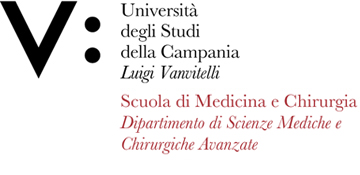Giovanni DI BERNARDO
Insegnamento di BIOLOGIA MOLECOLARE
Corso di laurea magistrale a ciclo unico in MEDICINA E CHIRURGIA (Sede di Napoli)
SSD: BIO/11
CFU: 3,00
ORE PER UNITÀ DIDATTICA: 30,00
Periodo di Erogazione: Primo Semestre
Italiano
| Lingua di insegnamento | ITALIANO |
| Contenuti | 1: STRUTTURA DEGLI ACIDI NUCLEICI |
| Testi di riferimento | Genomi 4, T.A. Brown Edises |
| Obiettivi formativi | Il corso si pone come obiettivo quello di fornire allo studente le conoscenze riguardanti lo studio della struttura, funzione e regolazione delle macromolecole biologiche, quali il DNA, l’RNA e le proteine focalizzando l'attenzione sulle vie biochimiche in cui sono coinvolte. In particolare, verranno affrontati i meccanismi alla base della replicazione e riparazione del DNA e quelli che controllano il flusso dell'informazione genetica dal DNA alle proteine, trascrizione e traduzione, e i relativi meccanismi di regolazione cellulare. In questo modo lo studente sarà in grado di comprendere e conoscere la struttura, la funzione e l'attività delle macromolecole biologiche, e delle vie coinvolte nella regolazione e controllo del flusso dell’informazione biologica. |
| Prerequisiti | Non esiste alcuna propedeuticità sebbene è necessario aver acquisito conoscenze di base di chimica generale. |
| Metodologie didattiche | Il corso è organizzato in lezioni frontali con supporto informatico (Power Point) e cartaceo (documenti, lavori scientifici in pdf). |
| Metodi di valutazione | La verifica dell'apprendimento avverrà tramite colloquio orale. Le domande riguarderanno gli aspetti di base e principali della biologia molecolare. Pertanto, i quesiti risulteranno specifici per valutare le conoscenze fondamentali dell’argomento. Lo studente dovrà dimostrare di conoscere gli aspetti chiave della struttura, della funzione e della regolazione delle macromolecole biologiche, come il DNA, l'RNA e le proteine. Verranno analizzate le capacità dello studente di discutere su questi punti e l’abilità nello stabilire possibili connessioni. Il voto si esprima in trentesimi, partendo da un minimo di 18 fino ad un massimo di 30/30 e lode. |
| Programma del corso | Organizzazione molecolare della vita – |
English
| Teaching language | Italian |
| Contents | 1: STRUCTURE OF NUCLEIC ACIDS |
| Textbook and course materials | Genomi 4, T.A. Brown Edises |
| Course objectives | The course aims to provide students with the knowledge concerning the study of the structure, function and regulation of biological macromolecules, such as DNA, RNA and proteins, focusing attention on the biochemical pathways in which they are involved. In particular, the mechanisms underlying DNA replication and repair will be addressed, as well as those that control the flow of genetic information from DNA to proteins, transcription and translation, and the related mechanisms of cell regulation. In this way the student will be able to understand the structure, function and activity of biological macromolecules, and of the routes involved in the regulation and control of the flow of biological information. |
| Prerequisites | There are no prerequisites, although it is necessary to have acquired basic knowledge of general chemistry. |
| Teaching methods | The course is organized in lectures with computer support (Power Point) and paper (documents, scientific works in pdf). |
| Evaluation methods | Evaluation of student proficiency is based on and oral test (viva voce). Questions cover the basic aspects as well as the main aspects of molecular biology. The questions will be as specific to evaluate the basic knowledge of the topic. This means that the student must know the key steps of the structure, function and regulation of biological macromolecules, such as DNA, RNA and proteins. The student should be able to discuss on these topics and be able to connect and analyze the different subjects. The final grade is expressed in 30/30 were 18 represents the minimum and 30 the maximum. |
| Course Syllabus | Introduction to the Study of Cell and Molecular Biology |








